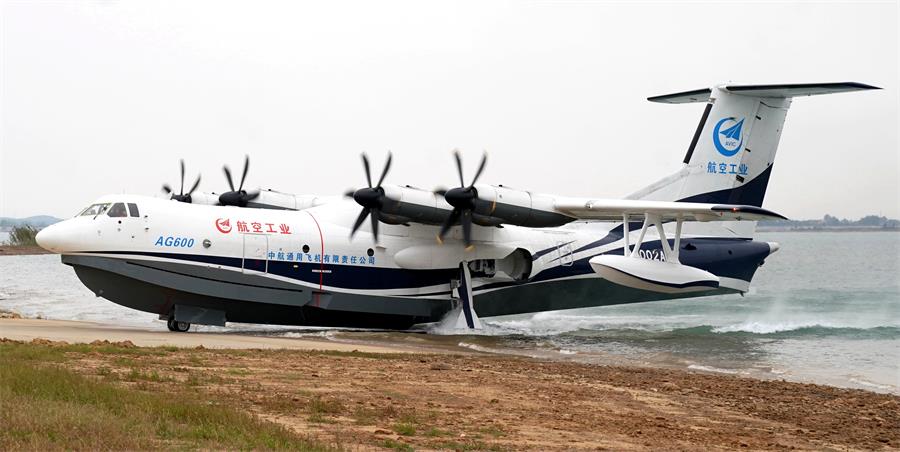China To Commence Sea-Based Test Flights of New AG600 Seaplane

China’s Aviation Industry Corp of China (AVIC) announced earlier today that it plans to commence sea-based flight tests of its new AG600 seaplane soon.
The project team is working with related authorities in making plans on the first sea-based takeoff and landing test to be conducted in Qingdao, East China's Shandong province, in the second half of this year.
Prototype of the jet has already made 172 preparatory flights that lasted 308 hours. There are two AG600 prototypes under testing – one for flight tests and another for ground-based static tests.
Construction of the first prototype began in March 2014 and was completed in July 2016. The aircraft took to the skies for the first time the following year in December. Ten months later, it carried out the first water-based takeoff and landing on the Zhanghe Reservoir in Jingmen, Central China's Hubei province.

With a length of 37 meters and a wingspan of 38.8 meters, the AG600 is roughly the size of a Boeing 737. Powered by four domestically designed WJ-6 turboprop engines, it has a maximum takeoff weight of 53.5 metric tons. These specifications make it the world's biggest amphibious aircraft, surpassing Japan's ShinMaywa US-2 and Russia's Beriev Be-200.
The AG600 will mainly be tasked with performing aerial firefighting and maritime search and rescue. It also can be refitted to conduct marine environmental inspections and marine resource surveys, as well as personnel and supply transportation, AVIC said in a statement.
The aircraft is designed for both land and water takeoffs and landings and has an operational range of about 4,500 kilometres. It is capable of carrying 50 people during a maritime search and rescue mission.
When assigned to fight forest fires, it can collect 12 tons of water from a lake or sea in 20 seconds and then use the water to douse blazes over an area of about 4,000 square meters.
Chinese Media



No comments:
Post a Comment